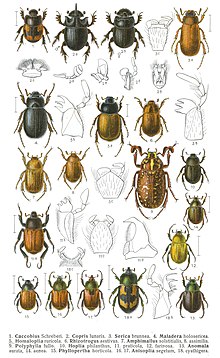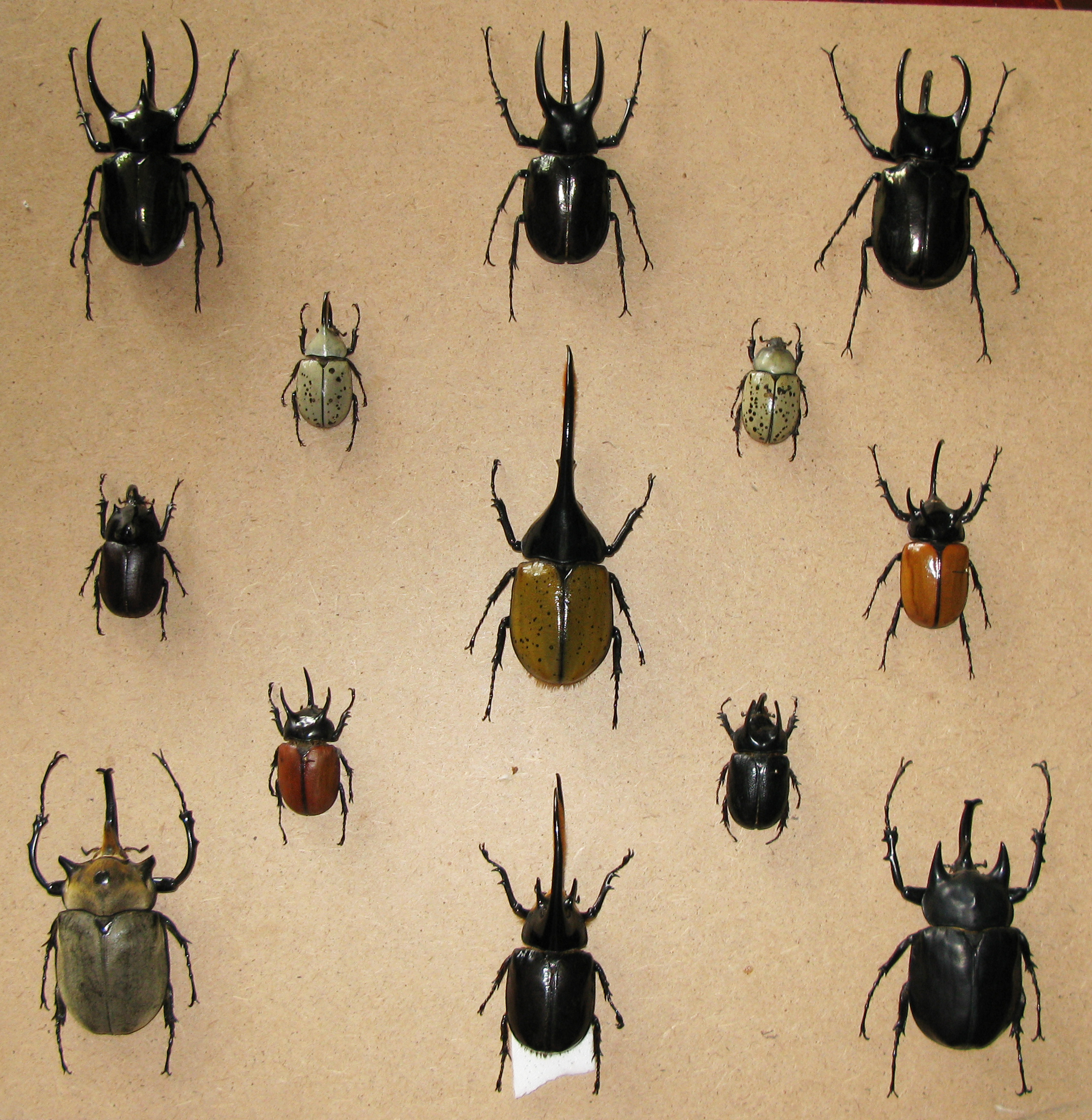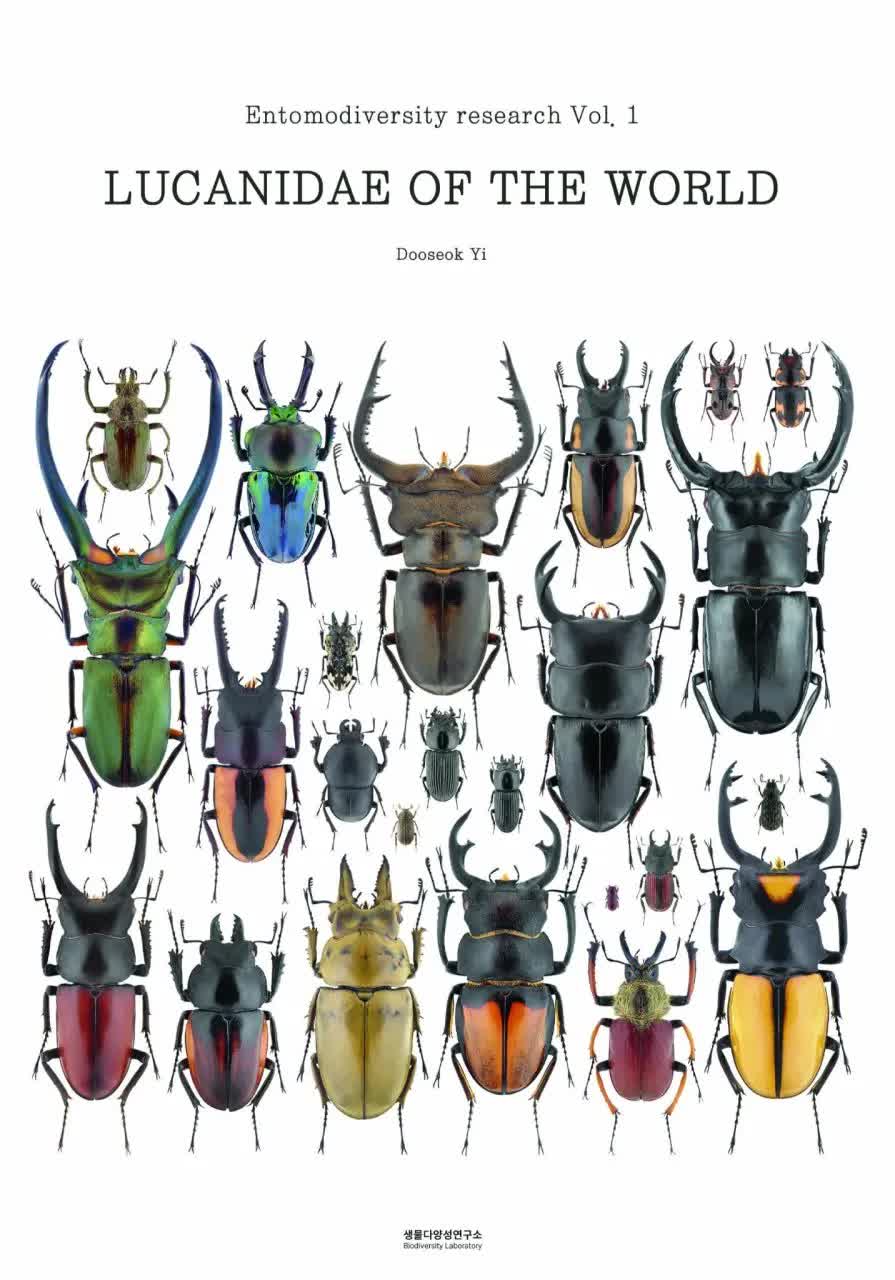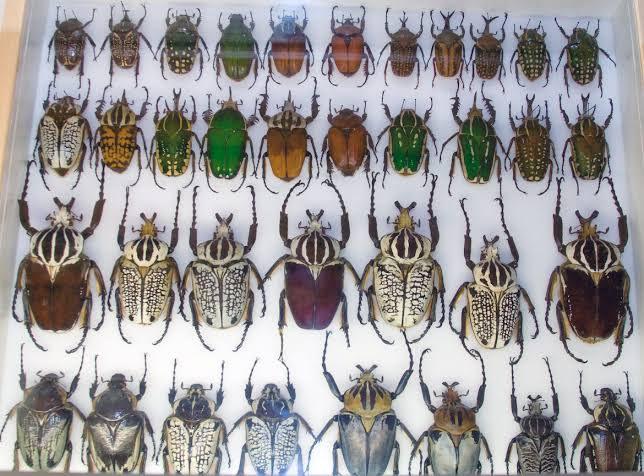Biology
Beetles are insects that belong to the order Coleoptera. They are known for their rigid wings called elytra, which protect their membranous wings used for flying. There are many different types of beetles, and they live in various habitats.
Beetles are often considered important for their role in recycling nutrients in forest ecosystems.
Superfamily, Family and Subfamily
In biological classification, organisms are grouped into categories based on similarities.
- Superfamily is a higher category that groups related families of organisms.
- Family is a group of related genera *(plural of genus)* that share common characteristics.
- Subfamily is a subdivision of a family, grouping genera that share even more specific similarities.
These classifications help organize and understand the relationships between different organisms.
My favorite families
Scarabaeoidea
Scarabaeoidea is a superfamily of beetles that includes several families, such as Scarabaeidae and Lucanidae. These beetles are known for their robust bodies and diverse habits, ranging from dung feeding to plant-eating and scavenging.

Scarabaeidae
Scarabaeidae is a family of Scarabaeoidea. Scarabaeidae is also known as the scarab beetle. They vary in size and shape but are often distinguished by their robust bodies and strong legs for digging.

Dynastinae
Dynastinae is a subfamily of Scarabaeidae. These beetles are known for their long horns and include species such as the Rhinoceros beetle, Elephant beetle, and Hercules beetle. These horns are used for combat during over females, so females generally do not have horns. Adult Dynastinae feed on sap, nectar, and fruit.
Rhinoceros and Elephant beetles are very similar, but you can notice the difference by the horns.
- Rhinoceros beetle usually has a curved horn and an extra horn on the top of its head
- Elephant beetle usually has a straight horn and no horn on its head

Lucanidae
Lucanidae is a family of Scarabaeoidea. Lucanidae commonly known as stag beetles, is a family of beetles known for their large, distinctive mandibles, particularly in males, while in females this mandibles are way shorter. These mandibles can be used for combat during mating disputes. Lucanidae larvae typically feed on decaying wood, while adults may consume sap, nectar, or fruit.
Lucanidae and Dynastinae beetles are the most common species kept as pets... and used for fighting, since these beetles have long mandibles and horns and are known to fight over females.

Cetoniidae
Cetoniidae, commonly known as Flower chafers or Fruit chafers is a family of Scarabaeoidea. Cetoniidae is known for their bright colors and patterns. They feed on flowers, fruits, and sap, playing an important role in pollination. They are typically active during the day and are often seen around flowers.
This family is also known for common species of green shiny beetles, such as Cetonia aurata and Protaetia cuprea. This family is funny because it includes both small beetles like those mentioned above and the Goliath beetle, one of the largest beetles in the world.

Some Observations
Scarabaeoidea
Since Scarabaeidae, Dynastinae, Lucanidae, and Cetoniidae belong to the same superfamily, their care requirements, as well as the appearance and behavior of their larvae, are very similar to each other.
I mention this because the following categories focus on "Beetle life cycles" and "Taking care of a beetle", with an emphasis on Scarabaeoidea beetles, which I have experience with and are the most common to keep as pets.
A lot of species
As you may notice, beetles have a LOT of families and species. In fact, beetles are one of the largest and most diverse groups of insects on Earth, with approximately 350,000 to 400,000 species, they represent around 40% of all insects.
Since this is the case, many species are not even catalogued. For example, Rhinoceros beetles and Elephant beetles are not a single species but rather a group of species. So, you can say a Rhinoceros beetle is a group of species within the subfamily Dynastinae of the family Scarabaeidae, which belongs to the superfamily Scarabaeoidea in the order Coleoptera.
The same applies for stag beetle and some other species
Beetle life cycles
The life cycle of a beetle follows 4 stages and includes 3 instars — A developmental stage in the life cycle of an insect or other arthropod between molts — As mentioned, I will primarily focus on Scarabaeoidea beetles (flower, rhinoceros, and stag beetles).

Stage 1: The egg
The female, once mated, will begin to find a suitable place for depositing her eggs. This suitable place will vary from one subfamily to another. For example, flower beetles will happily lay their eggs in decaying leaf matter. Whereas, the females of stag beetles will burry in search of rotten wood.
Upon finding a suitable piece of rotting wood, they chew tiny holes in the side in which they deposit a single egg before packing the whole back up with small fragments of wood. Then the move on and repeat the process all over again.
Some may only lay a few dozen eggs. Whereas others are capable of laying hundreds of eggs in their lifetimes. The length of time it takes for the eggs to hatch will vary a lot from one species to another.
Stage 2: Larvae
The time between each instar vary from a specie to another, this is just an estimate.
First Instar
2-3 weeksThe first instar starts after the larvae hatches from the egg. As beetle larvae develop they must shed their skin in order to grow. Each time they shed their skin they grow a little bit bigger.
Second Instar
20-30 daysThe larvae then eats and gains weight before shedding its skin for the first time, at which point it becomes a second instar. Then it will continue to eat and gain weight before shedding for a second time into the third instar.
Thid Instar
6-9 monthsThis is the longest stage of the larval development and can last just a few months for the simpler, smaller species, to several years for some of the larger more complex species. The larvae will slowly gain weight consuming as much substrate as possible. The more weight it gains, the larger and stronger it will be when it eventually develops into an adult beetle.
Stage 3: The pupae
There will come a point when the larvae become a much darker yellowish colour. Shortly after, it will construct a chamber in the soil where it will shed its skin for the last time and develop into the pupae.
Flower beetles will construct a strong cocoon made of soil in which they pupate. Whereas, stag and rhino beetles make chambers in the soil which are much flimsier, and often collapse if disturbed.
During the pupae stage the larvae breaks down and slowly transforms into the different parts of the adult beetle. The metamorphosis can last several weeks or months depending on the species.
Stage 4: The Imago (Adult)
Once metamorphosis is complete the adult beetle will emerge from the pupae. Its wing cases will form properly and harden, which is a process that may take a few days. The adult beetle will then have an inactive stage where it sits and waits inside its chamber/cocoon, sometimes for several months depending on the species. Its color is much lighter and darkens over time. They will then emerge completely when conditions become more favourable. The adult beetle will then make its way to the surface of the substrate where it will find food, mate and the life cycle will then start all over again.
Section credits to The Insect Farm
Taking care of a beetle
Terrarium
I recommend using a mixture of Substrat *(Garden Dirt)* and Sawdust. The larva may eat it, but as a precaution, I would also add decaying wood on the surface. Do not wet the soil, just keep it moist, you can use a spray bottle for that.
To check if the soil is ideal, take a small amount in your hand and close it. If the soil holds together and does not crumble like dry dirt, it is too wet or packed too tightly.
Always ensure the soil is soft and not too wet; every couple days moist the surface and maintain a room temperature *(around 25°C)*.
The same terrarium and temperature is the ideal for larvae and beetles.
Larvae
Differentiating larvae
Dynastinae, Lucanidae, and Cetoniidae larvae have very similar appearances, but you can distinguish them by certain details.
Dynastinae larvae usually have a black head, while Lucanidae and Cetoniidae larvae typically have a light brown head. To differentiate between these two, look at the dots on their sides. Lucanidae larvae usually have less visible dots, while Cetoniidae larvae have very visible dots and an orange spot on their head.

Larvae terrarium
My recommendation is fill the terrarium with soil to a height that is double the length of the larva and a width that is double or triple the length of the larva.
Food
While the larva may eat the sawdust in the soil, I recommend also placing decaying wood on the surface. Sometimes, the larva will dig up to eat it.
You can also place some leaves on the surface. The larva may not eat them, but it may enjoy them.
Advices
- Don't put more than one larva in the terrarium, as they are much smaller than adult beetles and may compete for food. Keeping them separate can prevent disputes.
- Larvae often stay buried throughout the day, which is normal behavior.
- Watch the color of the larvae: gray or darker colors can indicate that something is wrong and the larva may be dying. Review your setup if you see these colors. A white or transparent color is ideal, and a yellowed color indicates the larva is ready to pupate.
- During the day, place the terrarium near sunlight but not in direct sun or a hot location. Exposure to light may signal the larva that it is time to dig up and eat.
- Sometimes remove the larvae's poop to clean the soil.
- Please, don't disturb the beetle on pupate stage, just leave it alone.
Adult
Adult terrarium
I recommend filling the terrarium with soil to a height that is just slightly taller than the beetle *(of its width)* and a width that is double or triple the length of the beetle. Beetles prefer spacious environments
It is good to always have leaves, decaying wood, and possibly some logs and other natural materials on the surface. While only the larvae will eat the decaying wood, adult beetles like to sleep under these materials. And some species lay eggs on these materials.
Food
Adult beetles enjoy beetle jelly and fruits, with each beetle having its favorite fruit. Simply place the fruit on the surface of the terrarium, and they will find and eat it.
Don't worry with water, they will have it from the food.
Advices
- Beetles like to sleep underground and will dig up when they see light.
- Although beetles don't often fly, they may do so unexpectedly, so be prepared for this.
- Beetles rarely attack humans, but they are very strong.
- Maintain the moisture level in the habitat by regularly keeping the soil moist, not wet.
Procreation
Mating two beetles is very simple, just leave a male and a female in the same terrarium, eventually the mating will happen.
Each species has its own procedure for laying its eggs, see the *"Beetle life cycle"* section for some information, but in short, place some leaves, pieces of trunk and sticks.